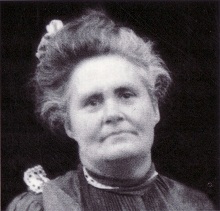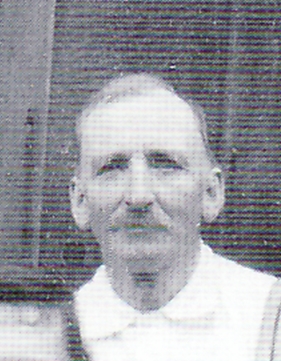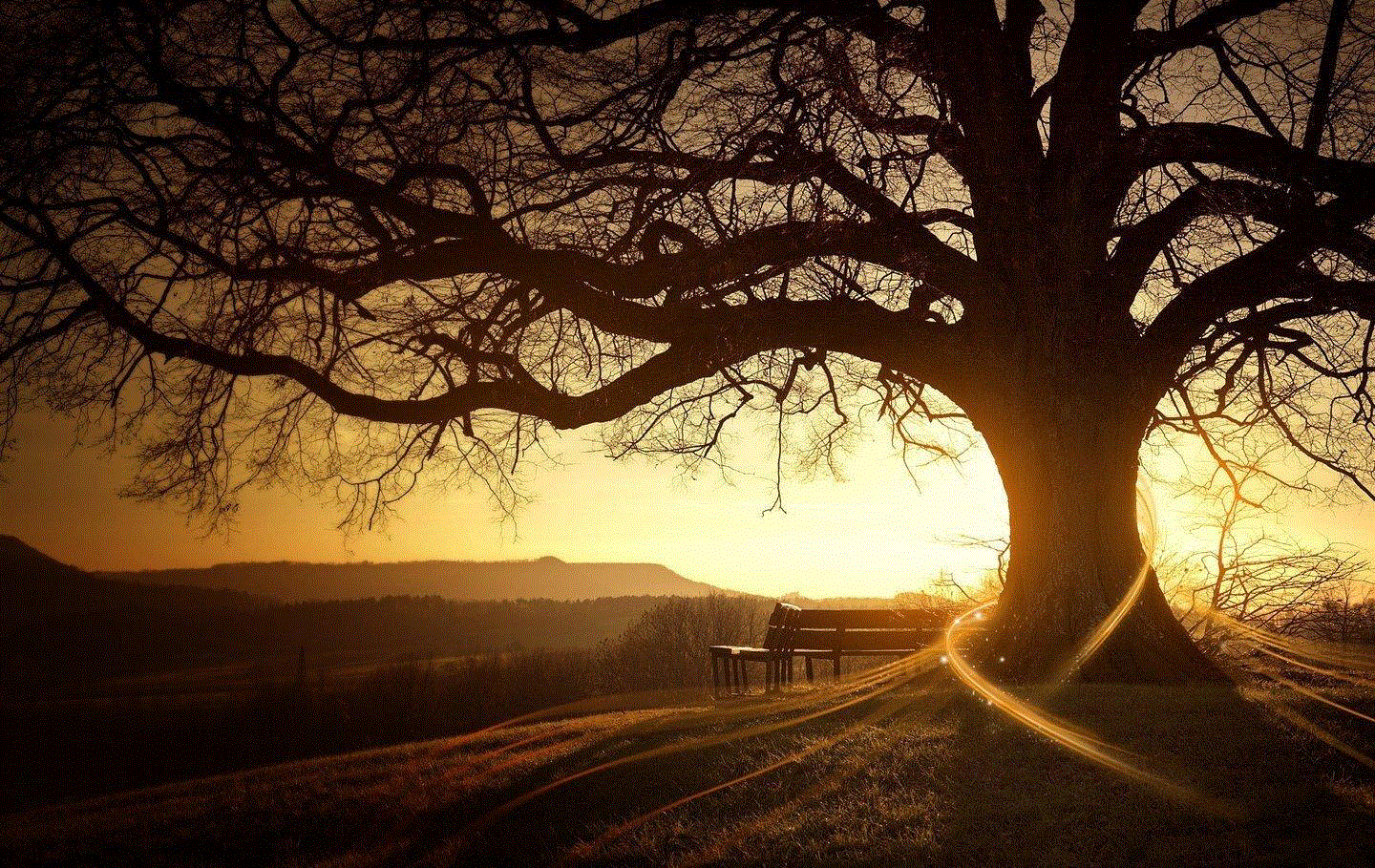|
Nellie E. Ladd - Mining Camp Photographer of the Trinity Alps |
|||||||||||||||||||||
|
It is with great appreciation to Valerie Budig-Markin, Gay Holland Berrien and the Trinity County Historical Society for allowing me to publish these photographs giving us a view into the lives of "Nellie" and Frank Ladd and their family in the gold fields of the Trinity Mountains in Northern California during the late 1800s and early 1900s. |
|||||||||||||||||||||
|
|||||||||||||||||||||
Nellie E. Ladd - Mining Camp Photographer of the Trinity Alps 1859-1922; Text & Design by Valerie Budig-Markin — A book full of colorful information on hardrock mining life in the upper New River watershed in and around old Denny (New River City), California. Valerie Budig-Markin is Professor of World Languages & Cultures and Women’s Studies at Humboldt State University in Arcata, California. |
|||||||||||||||||||||
 |
Mrs. Ladd came to this rugged and remote area in 1886. Her photographs taken between 1890 and 1920 illustrate the surrounding forest environment, and the activities of her miner-store owner husband and their two sons as well as portraits of the mines and mule train packers who lived and worked around her. In the region now officially designated as the Trinity Alps Wilderness Area, the gradual destruction of virtually all the structures of the hardrock gold mining days makes Nellie Ladd's century-old photographs invaluable records of cultural, as well as photographic history. Ellen Elizabeth "Nellie" Casey was born 10 Feb 1859 in Portsmouth, Rockingham, New Hampshire. She was the daughter of John and Ellen Casey. She married Frank J Ladd in 1886 in San Francisco. They had two sons, Grover Hayden (born 1 Jul 1887, Denny, Trinity, California) and Willard William (born 17 Jan 1889, Denny, Trinity, California). Responding to the call of the West, Nellie Casey had by the age of 15 experienced the adventure of crossing the country from the Atlantic Ocean to the Pacific. She probably had a previous husband before her marriage to Frank Ladd, since she bore the name "Graham" when she married Frank. |
||||||||||||||||||||
 |
Frank J Ladd was born 17 Jan 1852 in Abbot, Piscataquis, Maine; died 17 Feb 1932, Denny, Trinity California. He was the son of Thomas Hayden Ladd and Ann M Dyer. According to the data in the genealogy records, Frank was supposed to have died in 1884, not so. Frank traveled to the west coast, first as a fisherman and woodsman (in the redwoods) in Humboldt County, and then in 1883 traveling up New River in Trinity County and partnering with another man in a series of hardrock gold mines in what became known as the Old Denny area. Frank continued working and living in this area. The Ladds were well known in the area. Frank and Nellie continued with gold mining but also ran the store and post office, and, when the two boys were older, the family bought a large pack train of mules, using them to stock their store and to work at any other jobs needed. As the gold mines petered out and the store lost customers, the family made a move 20 miles downstream, bringing with them their store, post office, and pack train, and they began operating a ranch as well. |
||||||||||||||||||||
|
Slideshow Controls |
|||||||||||||||||||||
|
|||||||||||||||||||||
|
|
|||||||||||||||||||||
|
Denny is a ghost town in northwest Trinity County, California, United States. It was a mining area from the early days. Then during the Great Depression miners returned to the claims. Ladd's Store in Denny was the last viable business in Denny and it has been closed for years. |
|||||||||||||||||||||
|
Making a Home in the MountainsThrough time, the Trinity Alps Wilderness is taking back the forest. Retired U.S. Forest Service archeological technician Gay Holland Berrien has not only guided colleagues and friends in meticulous site studies and mapping of the now empty town and mine sites in the wildness, but has catalogued and exhibited Nellie Ladd’s photographs, most of them now housed with the Trinity County Historical Society in Weaverville, California. The cultural history in site studies, photographs, century-old articles from local newspapers, and tales and transcripts of stories by old-timers hold many of the secrets hidden in woods, meadows, and canyons where almost no structures remain, victims of moisture, erosion, mud and snow slide, scavenging and forest fires. Ellen Elizabeth Ladd, or as she signed her name, Nellie E. Ladd, amateur photographer, mother, wife, store owner, postal and elections clerk lived in the northwestern California upper New River mining district from 1886 to 1921. She was one of the first American women to vote in 1920. Her photographic collection, including glass slides, negatives, prints and postcards, reveals a treasure of local cultural history centered around the town of Old Denny. A century later, a major corpus of her photographic works is preserved, interpreted, and shared for the first time in the special edition photo-history of the New River gold mines and mining camps, as they were then and as they leave their traces today in the wilderness. By 1886 Nellie Ladd arrived in New River City. Business, as well as mining, was booming in the New River mining district, with a new two-story hotel in White Rock. When Nellie first saw New River City, there were several stores, restaurants, a saloon, a hotel, a sawmill and about 20 miners cabins. Construction was halted for a while due to the lack of nails. Growth of the community was substantial in the early years. Nellie and Frank settled first in a cabin a mile or less from New River City south across Slide Creek, the headwaters of New River, at the Mountain Boomer Mine. The first two years of Nellie’s life in the Trinity Alps brought gold, a family, new friends, and disaster. Almost as soon as she arrived at the mines, Nellie became pregnant. Her husband was named elections inspector in Forks of New River that fall of 1886. The next summer, in June, Frank and Oliver Clemens made a surprising new gold strike when a corner of a ledge of gold-filled quartz was revealed as they dug a road to haul ore from the Tough Nut Mine to the Hard Tack. The couple was in good spirits, then, when their son Grover Hayden, was born J uly 1, 1887. Grover may have been the first white child born in the New River mining district. Willard William was born on January 17, 1889. Beginning in December, 1889, and continuing nearly every day until March, snow fell as much as seven feet at a time. It was a dry snow creating severe avalanche conditions. On January 19, 1890, a day before Frank’s 48th birthday a huge avalanche hit. The Ladd cabin was hit and buried, and Frank, disappeared. Miraculously he survived. Someone remembered him saying he was going to clear snow away from one of the windows of the house, and everyone rushed out, digging frantically for four hours until they found him, unconscious, crushed against the house. He had breathed just enough air through the cracks in the walls to live but only regained consciousness after an entire night of efforts to revive him. The Ladd family moved the very next day to New River City and then settled nearby at Butterfly Flat. As soon as the family got situated at Butterfly Flat, Frank started working his mines again. In 1892 the Ladds made “Boynton Hall” their home. The Ladds’ life and standard of living had evolved with the success of Frank’s mining ventures. From survival concerns on a mountain slope to a temporary home and active community life, the to the exact center of town. The new Ladd home faced the trail coming up New River, at its intersection with the main street of Denny, which went north to Marysville and White Rock and south to the mines around Slide Creek. After a few short years, the Ladds and their peers lived a quite civilized existence, both in the mining district and beyond it. Pieces of a bottle of Dr. Kino’s New Life Pills found in the depression that was the Ladd cellar make one wonder whether Nellie was aware she had terminal cancer when she bought the pills. Women’s suffrage was an important issue to Nellie, who would be among the first women to vote in 1920, as a Democrat, and she would be on the local election committee in Denny. Life was getting easier, at least in terms of standard of living, and Nellie Ladd began her amateur photography career. She was among those who first used simple Kodak cameras. For the next 25 years, she recorded cultural and mining history, playful encounters, and arranged settings and portraits. Using both glass slide and negatives, she developed her photographs herself. She saved her work carefully, as did her son Grover after her death. The Ladds purchased the Denny Store in 1894. So it was that Frank stopped mining full-time and became a part-time storekeeper, maintaining the name “Denny Store” and Post Office. Nellie made and sold postcards in the Denny Store and sent and received them herself. By 1920 Nellie and Frank Ladd was the last two resident of “old Denny.” Even their children had moved to the “new” Denny to homestead for the family. Well known for their store and their warm welcome—"Mr. and Mrs. Ladd are still at the old store and are always glad to see any old friend who may drop in"— Frank and Nellie Ladd finally closed up shop and left town in 1921. It was a long last trip down-river, since Nellie had terminal rectal cancer that would end her life on February 10, 1922, on her 63rd birthday, according to her obituary. |
|||||||||||||||||||||
|
|
|||||||||||||||||||||
|
|||||||||||||||||||||



